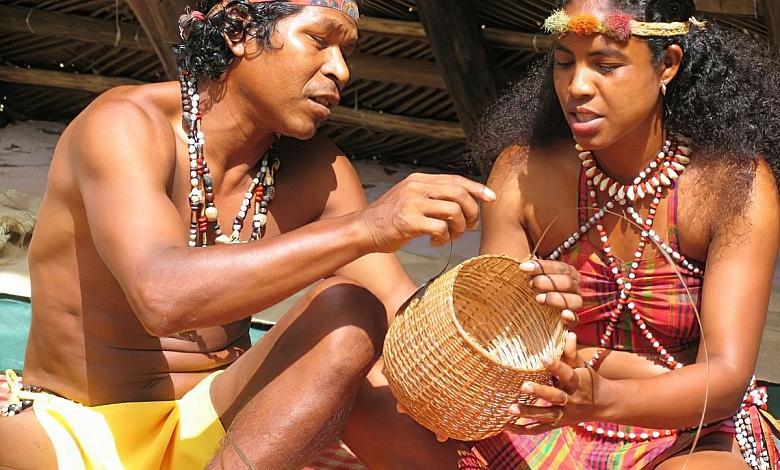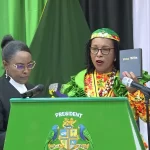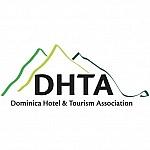Kalinago

The Kalinago, formerly known as Caribs, are the Indigenous people of Dominica and among the last remaining pre-Columbian native communities in the Caribbean. Their history on the island dates back to approximately 1000 AD, although their ancestors, the Ortoiroid people, settled in the Caribbean as early as 3000 BC. The name “Kalinago” reflects their own identity, whereas the term “Carib” was used by Europeans. The Kalinago call the island Waitukubuli, which means “tall is her body,” highlighting the island’s mountainous terrain.
About Dominica’s Kalinago
Dominica’s Kalinago culture is rich and diverse, deeply intertwined with its natural environment. The Kalinago have traditionally been skilled in canoe-building, fishing, and crafting, using resources sustainably from their surroundings. Basket weaving, pottery, and wood carving remain vital aspects of their cultural expression. The Kalinago Barana Aute, a model village in the Kalinago Territory, offers a glimpse into traditional Kalinago life and serves as a cultural and educational centre.
Language and Traditions
Although no longer widely spoken, the Kalinago language is a significant part of their heritage. Efforts to revive and maintain the language are ongoing, with cultural programs and educational initiatives to teach the younger generations. Traditional songs, dances, and rituals are integral to Kalinago ceremonies and celebrations, reflecting their deep connection to nature and their ancestors.
Art and Craftsmanship
Kalinago art and craftsmanship are renowned for their beauty and functionality. The intricate designs of their baskets, made from natural materials like larouma reeds, are highly valued. These baskets are practical and serve as a means of storytelling, with patterns and motifs that convey historical events and cultural narratives.
Kalinago Territory
The Kalinago Territory, established in 1903, spans 3,700 acres on Dominica’s East Coast. It comprises eight villages: Sineku, Mahaut River, Gaulette River, Salybia, Crayfish River, Bataka, St. Cyr, and Concord. The territory is governed by a democratically elected Kalinago Chief and Kalinago Council, emphasizing their autonomy and cultural preservation. The territory serves as a hub for cultural tourism, offering visitors an authentic experience of Kalinago traditions and their connection to the natural world.
- Governance and Leadership: The Kalinago Territory’s governance structure is designed to reflect its traditional values while adapting to modern administrative needs. The Kalinago Chief, elected every five years, plays a crucial role in decision-making and represents the community at national and international levels. The Council works alongside the Chief to address land management, cultural preservation, and economic development issues.
- Economic Activities: The Kalinago economy primarily focuses on agriculture, fishing, and craft production. The territory’s fertile lands allow for the cultivation of crops like cassava, bananas, and various root crops, which are essential to their diet and trade. Craftsmanship, including basket weaving and wood carving, provides both a source of income and a means of cultural expression.
Resistance and Resilience
Throughout history, the Kalinago have shown remarkable resilience against colonial forces. Despite treaties like the 1660 Treaty of Saint Charles, which recognized Dominica and Saint Vincent as Carib Reserves, the Kalinago faced continuous encroachment by European powers. Their ability to leverage Dominica’s rugged landscape helped them maintain independence longer than other Caribbean tribes.
- Colonial Encounters: The arrival of Europeans in the Caribbean marked a challenging period for the Kalinago. The Spanish, French, and British attempted colonising Dominica, but the Kalinago fiercely defended their territory. They used their knowledge of the land and guerrilla tactics to resist European forces, leading to prolonged conflicts and eventual treaties.
- Cultural Preservation: In the face of external pressures, the Kalinago have remained committed to preserving their cultural identity. This commitment is evident in their continued practice of traditional customs and their efforts to pass on cultural knowledge to future generations. The Kalinago Barana Aute is a focal point for these preservation efforts, providing a space for artistic education and exchange.
Modern Kalinago Community
Approximately 3,000 Kalinago people live in Dominica, striving to preserve their heritage while integrating with modern society. The community is actively involved in sustainable practices, balancing cultural preservation with environmental conservation. The Kalinago Council works closely with the Dominica government and international organizations to promote sustainable development and cultural tourism.
- Sustainable Development: Sustainability is a core principle of the Kalinago way of life. The community emphasizes the importance of maintaining ecological balance and protecting natural resources for future generations. Initiatives such as eco-tourism and organic farming are promoted to achieve economic growth while preserving the environment.
- Education and Health: Education and healthcare are prioritized within the Kalinago Territory, and efforts are being made to improve access and quality. Educational programs focus on academic subjects and cultural knowledge, ensuring that Kalinago children receive a well-rounded education. Healthcare services are being enhanced to address the specific needs of the community, with a focus on traditional medicine and wellness practices.
Challenges and Future Prospects
The Kalinago face ongoing challenges, including economic development and environmental threats. Efforts are being made to enhance infrastructure and education within the territory while promoting eco-tourism and cultural exchange. The community’s leaders, including the Kalinago Chief, are focused on strengthening resilience against natural disasters and climate change, leveraging traditional knowledge and practices.
- Economic Diversification: Diversifying the economy is a crucial objective for the Kalinago. While traditional activities like agriculture and crafts remain essential, there is a push to explore new opportunities in tourism and technology. Partnerships with government and international agencies are being sought to support these initiatives and provide training and resources.
- Environmental Stewardship: Environmental stewardship is a fundamental aspect of Kalinago culture. The community is involved in conservation efforts to protect the island’s unique biodiversity and address environmental challenges such as deforestation and climate change. The Kalinago are also advocates for sustainable development practices that respect and preserve the natural world.
The Kalinago people of Dominica represent a unique cultural and historical legacy, embodying the spirit of resilience and adaptation. As they navigate the complexities of modernity, the Kalinago continue to celebrate their heritage, ensuring that their traditions and knowledge are passed down to future generations. The Kalinago Territory is a testament to their enduring presence and integral role in Dominica’s identity as the Nature Island of the Caribbean.




